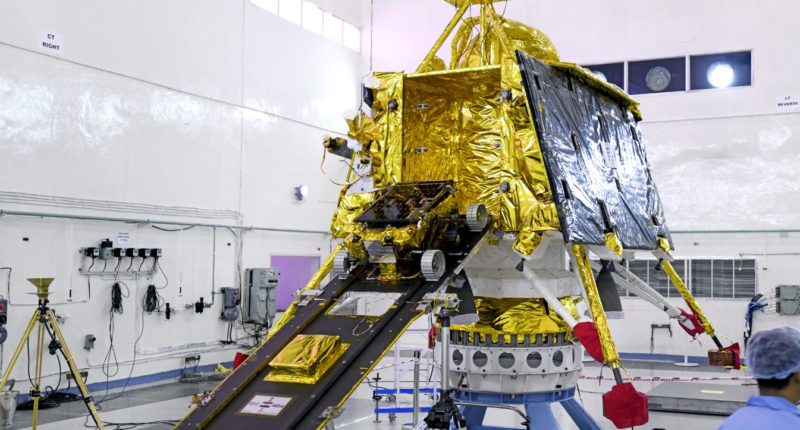On 22nd July, ISRO (Indian Space Research Organization) launched, one of its most ambitious lunar exploration mission – Chandrayaan 2. Focused on mapping the lunar surface to study variations in lunar surface composition (which are essential to tracing back the origin and evolution of the Moon) and to further analyze the evidence of water molecules on moon, Chandrayaan-2 will consist of an orbiter, a lander, and a rover.
The spacecraft entered Moon’s orbit on 20th August and 23rd August it captured images of the lunar surface from an altitude of 4375 km. Today, ISRO shared these images through its Twitter account stating:
“Lunar surface imaged by Terrain Mapping Camera-2(TMC-2) of Chandrayaan-2 on August 23 at an altitude of about 4375 km showing craters such as Jackson, Mach, Korolev and Mitra (In the name of Prof. Sisir Kumar Mitra).”
Further, Chandrayaan-2 has sent another set of images (total three images) of a few more impact craters, namely, Plaskett (109km), Rozhdestvenskiy (177km), Hermite (104 km), Sommerfeld (169 km), and Kirkwood (68 km). All of these were imaged by Terrain Mapping Camera 2 (TMC-2) on 23rd August. The detailed images can be seen here.
The Jackson crater is located in the northern hemisphere of the far side of the Moon and has a diameter of 71 km. Located near the Mach crater, is the impact crater Mitra (92 km diameter). This crater is named after the Indian physicist Prof. Sisir Kumar Mitra, known for his work in radiophysics and on the ionosphere.
The next stage of the mission includes the detachment of the lander called Vikram lander and its descent on the lunar surface. The lander will carry a small rover (weighing ~27 kg) that will be examining the geological composition of lunar soil. The Vikram lander (named after Vikram Sarabhai, an Indian scientist and the father of Indian Space Programme) is scheduled to detach on Sept 2 and will make a soft landing on the lunar surface on Sept 7.
The semi-autonomous rover called Pragyan will have a 14 days life span within which it will analyze a region within half a kilometer of the lander. The lander carrying the rover will be landing at a location about 600 km from the south pole of the Moon. It is fascinating to note that this will be the first time any spacecraft will explore the south pole of the Moon.
Launched from the Satish Dhawan Space Center in Sriharikota, India, aboard a GSLV (Geosynchronous Satellite Launch Vehicle ) Mark III rocket, Chandrayaaan-2 mission’s cost is $145 million.
The Tech Portal is published by Blue Box Media Private Limited. Our investors have no influence over our reporting. Read our full Ownership and Funding Disclosure →







